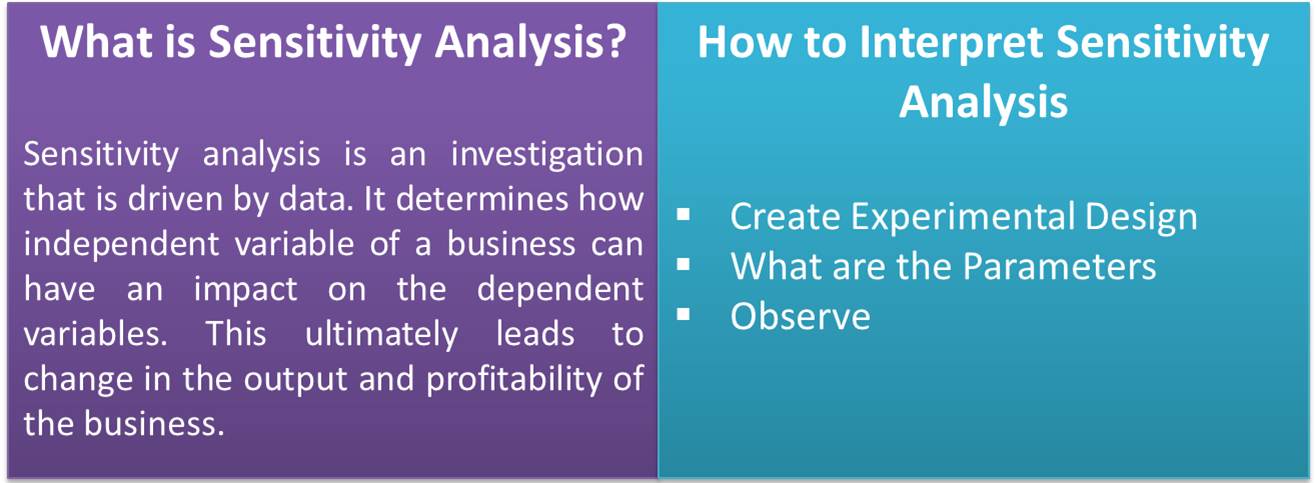What is Sensitivity Analysis?
Sensitivity analysis is an investigation that is driven by data. It determines how the independent variable of a business can have an impact on the dependent variables. This ultimately leads to a change in the output and profitability of the business. This concept is employed to evaluate the overall risk and identify critical factors of the business. The business tries to find alternative solutions to different problems by doing so.
After the sensitivity analysis definition, let’s take an example to further clarify the concept.
Example of Sensitivity Analysis
Suppose an organization is making mobile cases and covers. Every month many new mobile releases and many older mobiles get outdated. In the given case, the business has two options, i.e., either to wait for the new launch of mobiles every month or keep producing the cases for older mobiles. If the business keeps waiting for the launch of new phones, the number of cases it could have sold will not contribute to the profits. Therefore, the business will have to determine how many cases need to be produced. Hence, the number of cases to be produced are dependent variable here.

It is very important to rightly interpret the sensitivity analysis study. So, let us have a look at how to interpret it.
How to Interpret Sensitivity Analysis
The interpretation of the sensitivity analysis can be made by keeping the following factors in mind:
Create Experimental Design
It is important to create an experimental design of the business model and find what parameters can affect it the most. By assigning different values to different variables ranging from minimum to maximum, one can know the immediate and long-term effect of various parameters on business. Find the best suitable combination and apply it to the business model.
What are the Parameters
To correctly interpret the results, the parameters selected should be right. The parameters can be different for different models of business. However, the common parameters may include technical parameters, number of activities involved in business, number of bottlenecks, risk, the effect of bottlenecks on business, etc. The selection of the right parameters will help arrive at the right interpretation of the analysis.
Observe
Once the analysis is done with different parameters and combinations, the next step is observation. Observation is important as it determines which strategy must be followed by the business for higher growth and profit maximization. The observation may involve; the outcome of analysis based on different decision variables, the impact of different variables and parameters on the strategy of the business, any ratifications to be made in the strategy, etc.
Sensitivity analysis can be evaluated by using different methods. Let us have a look at the different methods.
Methods of Sensitivity Analysis
There are two methods for carrying out the analysis. They are as follows.
Simulation and Modeling technique
Simulation and modeling is an age-old technique to simulate a range of scenarios and see their outcomes.
Scenario Management using Microsoft Excel
Scenario Manager in Microsoft Excel is an excellent tool for conducting sensitivity analysis. You can easily define various scenarios and see their respective results using this tool.
Conclusion
There are various advantages and disadvantages of sensitivity analysis, and it provides a solution to different business problems under different situations. It helps the decision-makers of a business to learn about the different parameters that drive a business. The business also knows how each parameter affects its functioning and profitability. After considering the different bottlenecks and variables, this analysis evaluates the best business model. The aim of sensitivity analysis is to arrive at a business model that results in higher EPS. To sum up, every business must conduct sensitivity analysis to stay ahead of its competitors and for higher growth and sustainability.

